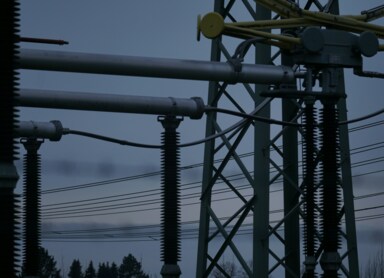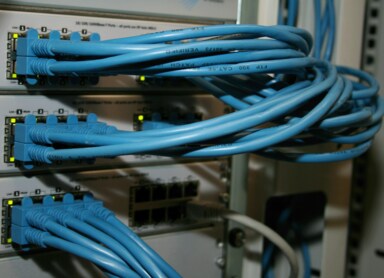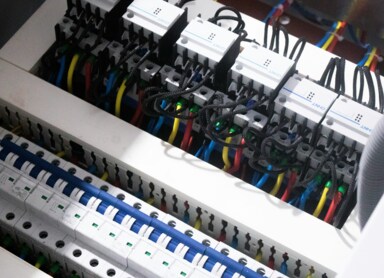Cogeneration fee – what it is and how it affects your electricity bill
On your electricity bill, you’ll find many different charges. In addition to the amount for actual electricity consumption, customers also pay various distribution fees. Alongside the RES (renewable energy) fee, quality fee, capacity fee, and two types of network charges, there’s also the cogeneration fee. What is it, and how is it calculated?
Cogeneration fee – what it is and why it’s charged
The cogeneration fee is regulated by the Act on the Promotion of Electricity from High-Efficiency Cogeneration. It is a component of the variable distribution charge, designed to support power plants that produce electricity through cogeneration. This is an environmentally friendly solution that involves the simultaneous generation of two forms of energy—for example, heat and electricity—in a single technological process.
Cogeneration technologies, also known as CHP (Combined Heat and Power), make efficient use of the heat produced during electricity generation. Without a cogeneration system, thermal energy would be wasted as heat dissipates during cooling. With CHP, it’s possible to generate both electricity and heat at a lower cost. Moreover, cogeneration helps reduce carbon dioxide emissions, thereby minimizing the carbon footprint.
There are various types of cogeneration technologies. A common example is a gas turbine with a heat recovery boiler, which operates as follows:
- Gas is burned in the turbine, and the resulting kinetic energy drives the turbine rotor.
- Exhaust gases are directed to a heat recovery boiler, where they heat water to produce steam.
- The steam drives a steam turbine, converting thermal energy into mechanical energy.
- The steam turbine generates electricity.
Although cogeneration systems are more complex than traditional electricity generation setups, many countries are increasingly investing in them—for several reasons.
Firstly, by using waste heat, they effectively utilize “free energy.” The system is environmentally friendly and reduces dependence on nonrenewable resources such as wood or coal. Another advantage is that CHP systems can reach full efficiency quickly after startup.
How cogeneration systems work and where the cogeneration fee comes from?
While cogeneration systems are efficient and environmentally beneficial, they require specialized infrastructure and additional operational costs related to maintenance and modernization. The cogeneration fee is intended to offset these costs so that all end users who benefit from these technological innovations contribute to their implementation.
According to Article 60(1) of the Act, the transmission system operator collects the fee to ensure the availability of electricity generated from high-efficiency cogeneration in the national grid. The revenue collected from end users can only be used to cover specific categories of expenses, such as:
- Payment of cogeneration premiums (standard, guaranteed, and individual).
- Covering the operating costs of the settlement operator responsible for managing the cogeneration support system.
It’s important to note that the fee is collected by the transmission system operator, who does not retain it but transfers it to a cogeneration fee account managed by Zarządca Rozliczeń S.A., as specified in Article 47 of the Act on the Coverage of Costs Incurred by Electricity Producers in Connection with Early Termination of Long-Term Power and Energy Sales Agreements.
Who pays the cogeneration fee?
Under Article 61(2) of the Act on the Promotion of Electricity from High-Efficiency Cogeneration, the cogeneration fee is collected from three groups:
- End users directly connected to the distributor’s network.
- Energy companies engaged in transmission or distribution, not themselves payers of the fee, but directly connected to the distributor’s network.
- Electricity producers connected to the distributor’s network who sell electricity, provided the distributor itself does not pay the fee.
Cogeneration fee on the electricity bill – how much is it and how is it calculated?
The cogeneration fee depends on the amount of electricity consumed. It is calculated as the product of the cogeneration fee rate and the total electricity drawn from the grid and consumed by end users.
The rate is set annually by regulation from the Minister of Energy in accordance with Article 64 of the Act.
The latest regulation, dated November 29, 2024, sets the fee for 2025 at 3 PLN per megawatt-hour (MWh).
Cogeneration fee and photovoltaics – do solar energy users have to pay it?
Installing solar panels helps reduce electricity bills since part of the energy demand is met by the electricity produced on-site. However, photovoltaic systems usually do not eliminate the cogeneration fee entirely, as during periods of low production (e.g., at night, on cloudy days, or in winter), prosumers still draw some electricity from the grid.
An exception applies to PV systems with energy storage, where the generated energy exceeds demand but is stored instead of fed back into the grid. In such cases, the cogeneration fee may not appear on the bill—though this requires precise optimization and proper system sizing.
Can the cogeneration fee be avoided?
Under the Renewable Energy Sources Act, certain companies—depending on their PKD (business classification code)—may be eligible for partial exemption from the cogeneration fee and the RES fee.
Two groups of companies qualify:
- Group I – eligible for up to 15% exemption on purchased electricity.
- Group II – eligible for up to 25% exemption.
Group I includes businesses involved in fruit and vegetable processing, animal feed production, and textile manufacturing.
Group II includes companies producing food, chemicals, and machinery.
It’s important to monitor legal updates, as these exemptions and classifications can change over time.
If you need assistance with green energy planning, our consultants can help you develop a custom strategy that maximizes your renewable energy potential.






